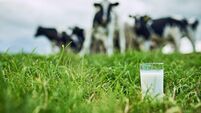Dairy farms in straitjackets
Speaker after speaker emphasised the need for larger dairy farms. But they can expand only if small dairy farms disappear, and free up quota.
There are fewer and fewer farmers left from the era when a few cows kept hundreds of thousands of small farms in existence; efficiency and competitiveness are now the objectives, rather than the maximum number on the land.










